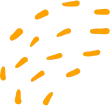



Valence Bond Theory
Chapter Name : Chemical Bonding And Molecular Structure |
Sub Topic Code : 102_11_04_06_01 |
Topic Name : Valence Bond Theory |
|
Sub Topic Name : Valence Bond Theory |
|
Introduction
• Lewis approach fails to explain the formation of chemical bond as well the observed bond lengths in molecules such as H2. • It also gives no idea about the shapes of polyatomic molecules. • Vsepr theory although gives the geometry of simple molecules but it does not explain them properly. • Valence bond theory helps to explain this.
Pre-Requisites:
Covalent bond, ionic bond, molecule, bond length
Activity:
Soapy water is able to remove grease and oil from clothes or hands as it is a polar covalent molecule.
Real Life Question:
How is a sugar
molecule formed?
Key Words / FlashCards
| Key Words | Definitions (pref. in our own words) |
|---|---|
| Valence bond theory | It focuses on how the atomic orbitals of the dissociated atoms combine to give individual chemical bonds when a molecule is formed. |
Learning aids / Gadgets
| Gadgets | How it can be used |
|---|---|
| Soapy water and grease/oil | See what happens when you mix soapy water with oil or greased closed or hands. |
Real life uses :
Covalent nature of molecules (water) makes them a good solvent.
Places to visit :
Kitchen, bathroom
Practical examples around us
| Examples | Explainations |
|---|---|
| Soap water removes grease | Soapy water removes grease from clothes, hands, utensils as water is a polar molecule. |
What you learn in Theory:
Valence bond theory helps to explain the shapes of molecules better. Eg hydrogen molecule.
What you learn in Practice:
VB theory gives idea about the shapes of polyatomic molecules and bond lengths.